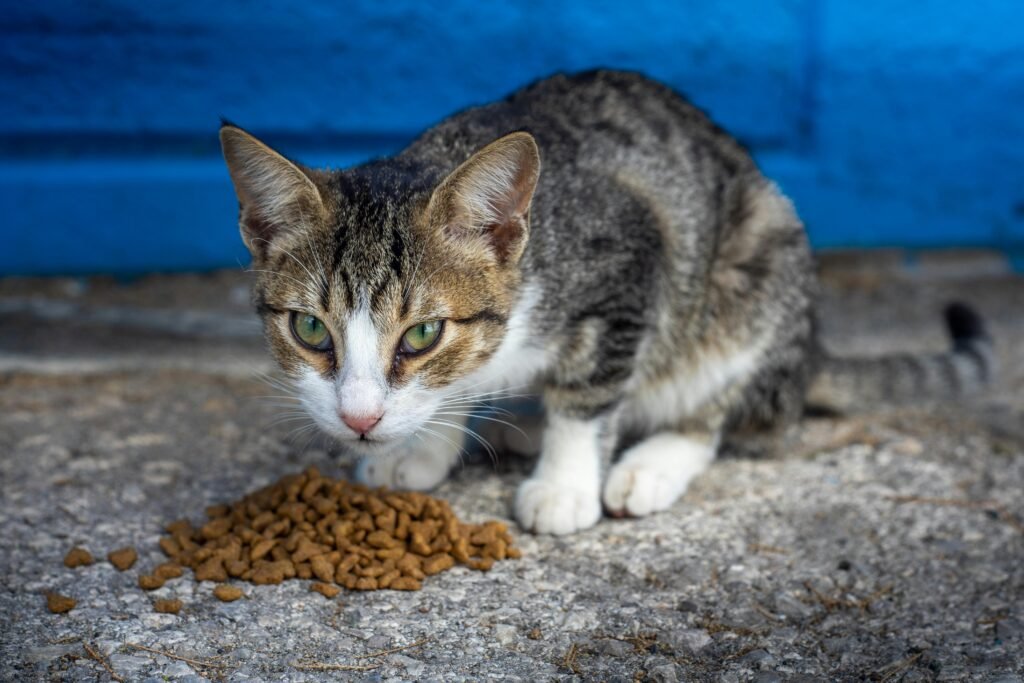
Choosing cat food that perfectly combines nutrition, taste, and affordability can feel overwhelming. Best Affordable Cat Food: Healthy and Tasty presents carefully curated, budget-friendly brands rich in quality protein, essential vitamins, and flavours cats adore. From playful kittens to calm seniors, this guide offers practical tips on reading nutrition labels and scoring the best deals. Feel confident knowing your feline enjoys balanced, delicious meals without stretching your budget.
Best Affordable Cat Food and Protein Power
You need high-quality protein to keep your cat’s muscles toned and energy peaking. The right blend of animal-based protein—like chicken or fish—supports lean muscle growth and aids heart health. However, not every budget formula delivers. Scan labels for named meats rather than vague “meat meal.” That way, you ensure each bite of Best Affordable Cat Food fuels vigorous play sessions and healthy heartbeats.
Best Affordable Cat Food for Digestive Support
Cats with sensitive tummies benefit from formulas offering digestive support. Ingredients such as digestible carbohydrates (brown rice or sweet potato) pair with mild fiber sources to soothe the gut. Grain-free options may help reduce stomach upset and litter-box mishaps. When you choose Best Affordable Cat Food, look for brands that highlight prebiotics or probiotics—they assist nutrient absorption and gut flora balance.
Best Affordable Cat Food that Keeps Coats Shiny

A glossy coat reflects good nutrition. Blends rich in omega-3 and omega-6 fatty acids ensure fur stays smooth and vibrant. These fats also benefit brain function and joint health. Many budget-friendly lines now include fish oil or flaxseed meal to boost shine. By selecting Best Affordable Cat Food fortified with these essentials, you’ll see brushing sessions become quicker—and less messy.
Best Affordable Cat Food for Weight Control
Indoor cats can pack on pounds without warning. Overweight felines face joint strain and diabetes risk. You can guard against those dangers by choosing Best Affordable Cat Food formulated for weight control. These products balance moderate fat content with extra fiber, helping your cat feel full on fewer calories. Portioning meals and sticking to a feeding schedule reinforces healthy habits.
Best Affordable Cat Food Brands to Watch
Several lines strike the perfect cost-versus-quality balance.
- Purina One: Named meats top these recipes, and many formulas address hairball control and urinary health.
- 9Lives: Economical and widely available, these blends pack essential vitamins and minerals into every bowl.
- Friskies: Known for puppy-like flavors cats devour, Friskies recent recipes include whole grains and added taurine.
- Iams ProActive: Though slightly pricier, sales and subscriptions often bring Iams into your budget range—and you’ll gain formulas targeting immune support and dental health.
Best Affordable Cat Food Shopping Strategies

You don’t need to pay full price every time:
- Subscribe and save: Many online retailers offer recurring discounts.
- Bulk-buy: Larger bags cost less per serving—just store food in airtight bins.
- Clip coupons: Manufacturer websites and store apps regularly post deals.
- Join loyalty programs: Earn points on each purchase for future savings.
Best Affordable Cat Food Transition Tips
Switching diets too quickly can cause vomiting or refusal. Instead:
- Mix 25% new food with 75% old food for three days.
- Increase to a 50/50 blend for another two days.
- Move to 75% new food, 25% old food for two more days.
- Serve 100% new food thereafter.
This gradual method reduces digestive upset and helps your cat accept Best Affordable Cat Food without fuss.
Best Affordable Cat Food for Life Stages

Kittens, adults, and seniors each need tailored nutrition:
- Kittens require extra protein and fat for growth.
- Adults benefit from balanced calories to maintain ideal body composition.
- Seniors often need joint-support nutrients like glucosamine and chondroitin.
Check product lines labeled “Indoor,” “Kitten,” or “Senior” to match life-stage needs.
- How often should I feed? Twice daily suits most adult cats; kittens eat three to four small meals.
- Can I mix wet and dry food? Yes—mixing adds moisture and variety. Monitor portions to avoid overeating.
- Do generic brands compare? Some store brands match or exceed premium labels. Focus on ingredient quality, not marketing.
Conclusion
Choosing the Best Affordable Cat Food means balancing budget, nutrition, and taste. With smart label reading and savvy shopping, you’ll feed a happy, healthy cat—without overspending.
FAQs
1. What are the best cat food brands for Ragdoll cats?
Some top-rated brands for Ragdoll cats include Royal Canin, Blue Buffalo, Wellness CORE, Orijen, and Hill’s Science Diet.
2. What nutrients are essential for a Ragdoll cat’s diet?
Ragdolls need high-quality protein, healthy fats, omega fatty acids, and essential vitamins to support their long fur, joint health, and overall well-being.
3. Should I feed my Ragdoll wet or dry food?
A combination of wet and dry food is ideal to keep your Ragdoll hydrated while maintaining dental health and a balanced diet.
4. How much should I feed my Ragdoll cat daily?
The amount depends on your cat’s age, weight, and activity level, but generally, adult Ragdolls need around ½ to 1 cup of dry food or 5–7 oz of wet food per day.
5. Are there any ingredients I should avoid in my Ragdoll’s food?
Avoid artificial preservatives, fillers like corn and soy, and by-products, as they can cause digestive issues and provide low nutritional value.

